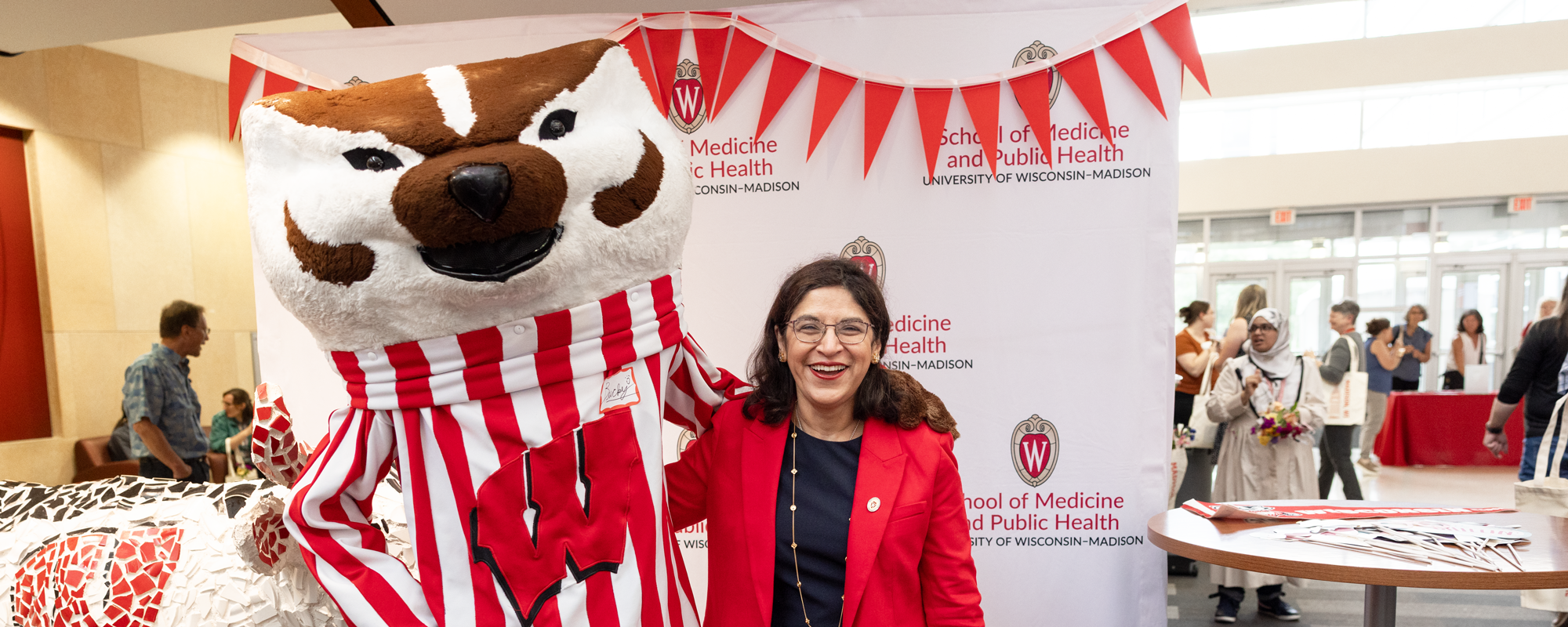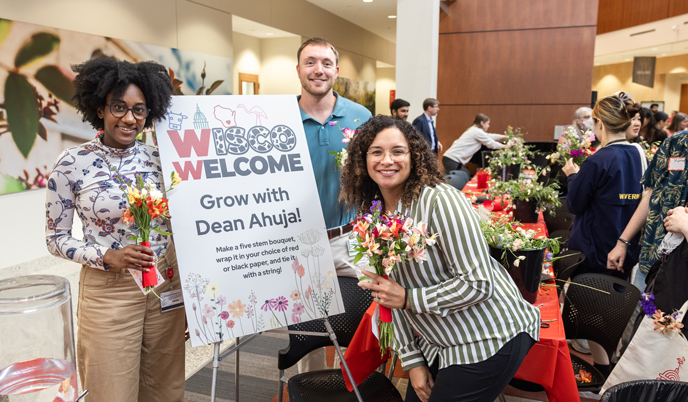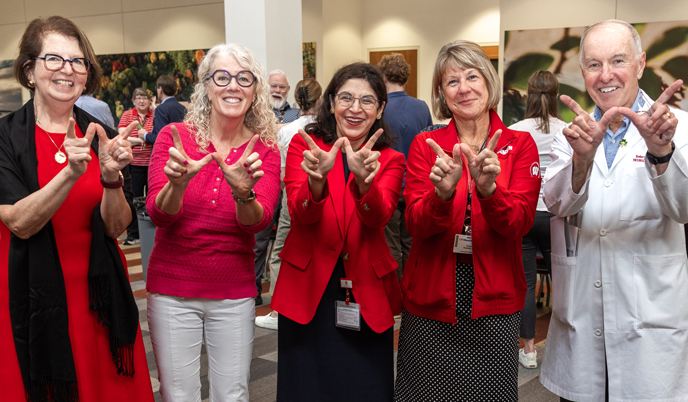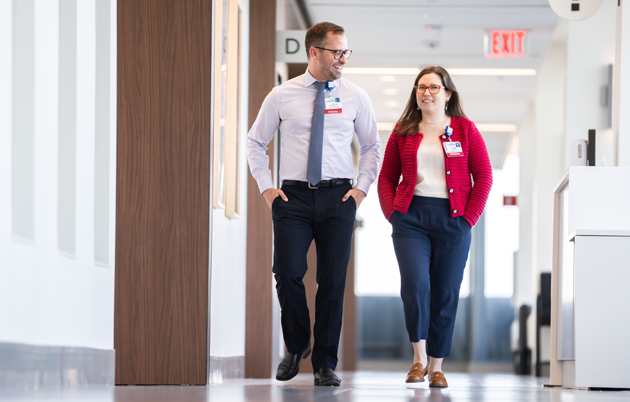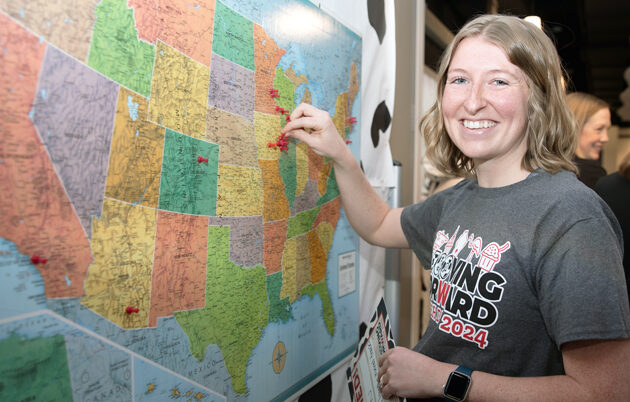How has your leadership style been shaped by your core values?
I have been described as a visionary, as someone who scans the horizon and builds with a sense of pragmatism, thinking about “How do we deliver?” I believe in empowering leaders to their full potential. I cannot do it all, and I ask that my leaders educate me. We discuss, we decide, and we unite in one vision. My core values include excellence, integrity, collaboration, respect, and — very important — performance. I always want to create a sense of belonging. That has to be there! Those values J.J. Watt mentioned as part of the Badger Way — hard work and humility — also resonate with me.
Amid the challenges facing academic medicine, do you see opportunity for optimism?
Yes. I have observed the decline of public trust in science over the last few years, and I think it says we have not talked with and listened to our communities enough. We must reflect first on what did not go well and then talk about what we can do better. When we talk about health, it is important to use language that helps people understand the research and the decisions and choices that care providers make. Call me a Pollyanna, but I believe the pendulum will swing back to belief in science. We have work to do in our communities — with teachers, community leaders, parents, and legislators. Good work is never easy, but I do see opportunities, especially with partnerships rather than academic medicine doing it alone.
How do you think alumni and donors can best support aspirations and initiatives of the school?
Alumni come from us and go on to talk about us. The commitment of alumni to curiosity, lifelong learning, and leading with compassion and to excellence in medicine, science, and public health is what changes the world. This shared passion — a quest for knowledge — is universal in our school. To borrow from a law of thermodynamics, that energy cannot be created or destroyed. It is innately part of us. Currently, there are immense challenges that medical schools are facing — fast, furious, and multidimensional. We bring people here who aspire to do great things. For that, we need resources and support, and backing by our alumni and donors is incredibly important, more than ever.
How do we support those whose work is on the precipice?
Consider these people who have trained for so many years, think about a researcher making that next discovery and what will happen if we are not able to get them the funding for work that will transform health care. We hope we can continue to partner with alumni and donors on this. I look forward to meeting more of our incredible alumni and other supporters in the next few months.
What strengths do you want to build on?
Part of why I accepted this role was the amazing work happening at this university and within this school — things that only happen here, things we want to do, and areas in which we are poised to lead. We are amazing in precision medicine. We could become the national example in theranostics. We are poised to elevate our cancer research, diagnostics, and prevention, setting new standards of excellence. We have the Wisconsin Alzheimer’s Disease Research Center helping to pioneer blood-based diagnostics. More broadly, I am excited by the university’s Research, Innovation, and Scholarly Excellence (RISE) Initiative, as well as RISE-THRIVE (Transforming Healthspan through Research, InnoVation, and Education) and RISE-AI (Artificial Intelligence). And best of all is the Wisconsin Idea. I want everyone to keep talking about that!
You have emphasized the importance of workplace well-being and finding joy in daily work. Why is this important?
As health care has become more complicated, we have seen a rise in burnout on every level — including medical and doctoral students, faculty, and staff — and that tells me we have forgotten how to have joy in the workplace.
Joy can be hard to describe. It is a feeling, but it comes from intention. We need to develop it like a muscle and cultivate spaces that help us do so. Joy centers around a sense of belonging, a feeling that you are in the right place, that out of all the places you could have gone, you came here, and you chose to stay. We have to be intentional about keeping joy alive in the places where we want to keep all this talent. We build a scaffolding for a culture of joy with good governance, with fairness and transparency, and with clear rules, boundaries, and resources. I want to ask all our leaders to take joy into account when thinking about the culture of their units.
How do you describe excellence in teaching and learning?
Excellence means understanding learning differences, both cultural and intergenerational; iterating on one’s teaching style to incorporate new tools; maintaining and inspiring curiosity; and avoiding dogmatism. Are we sparking a love of learning in our students, so they can go on to learn from their patients, learn in their labs? If I see learners lighting up about knowledge acquisition, like the students at the poster session I attended, then I know our educators are doing a good job. Encouraging excellence in teaching and learning among our five health professions programs means providing necessary resources and making sure we foster the right leaders and attract talented students. Our shared curiosity about how various health professionals approach health care helps us learn from one another.
